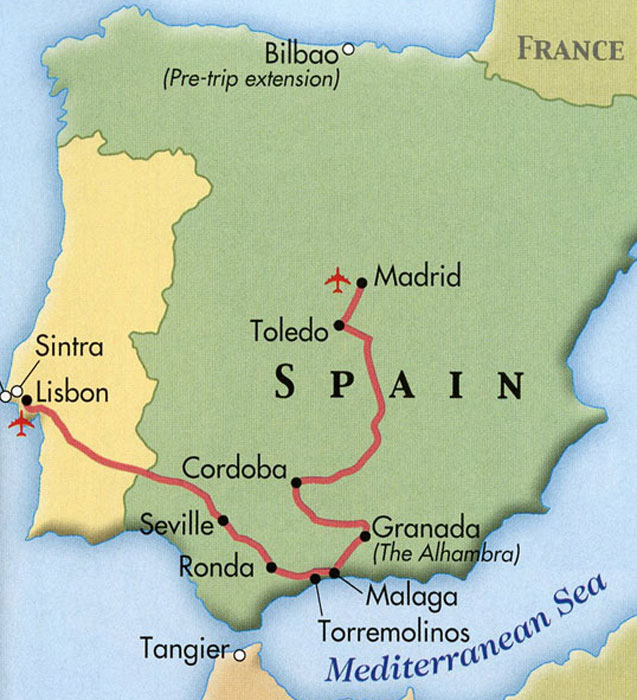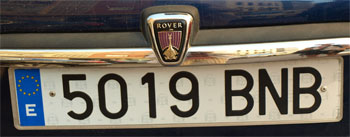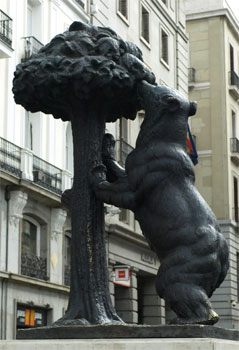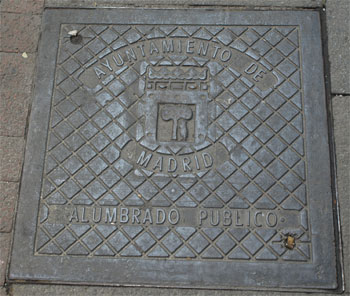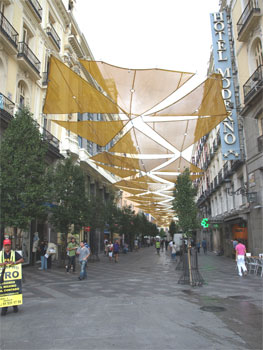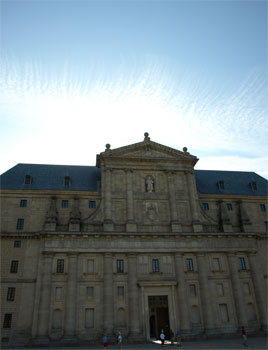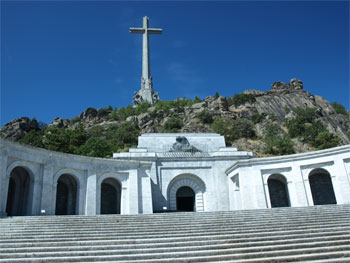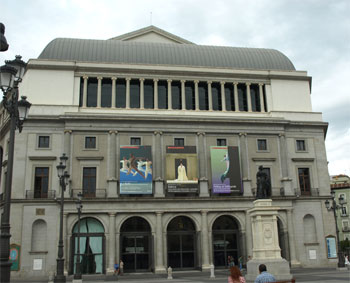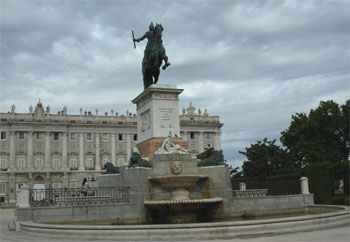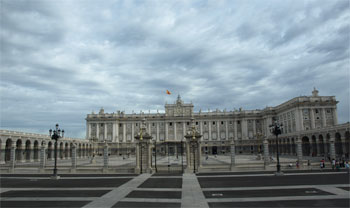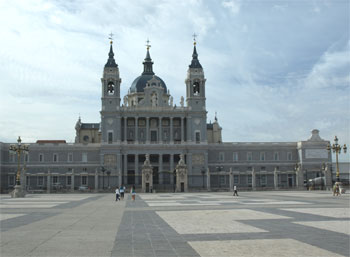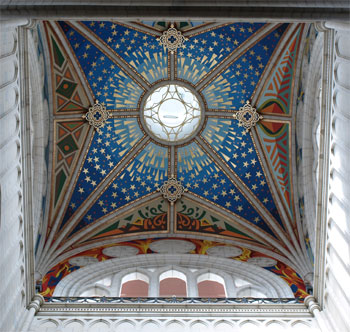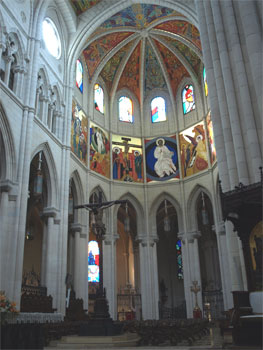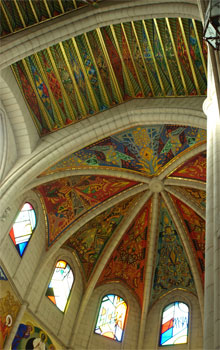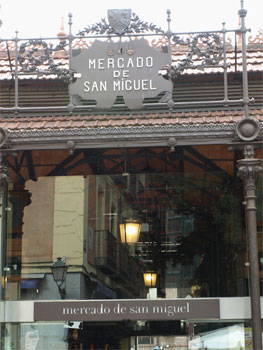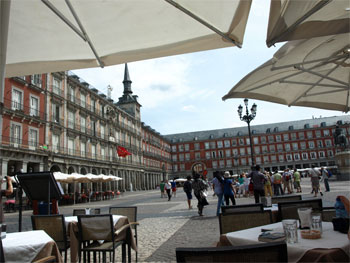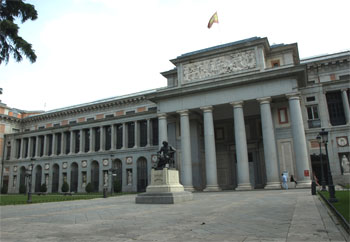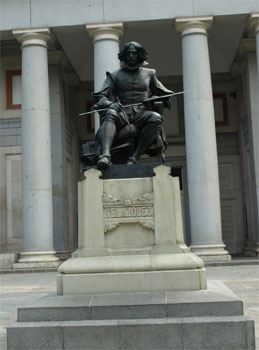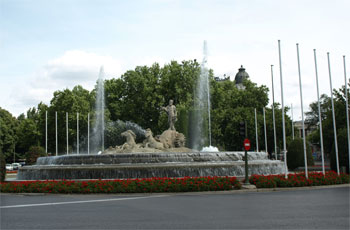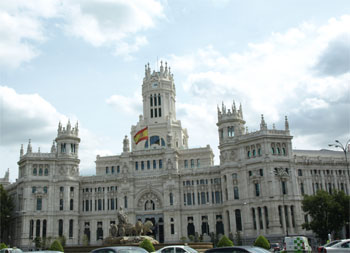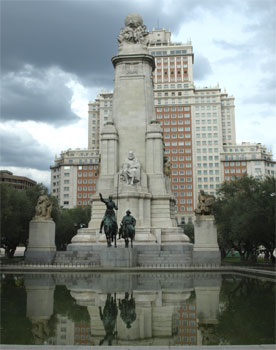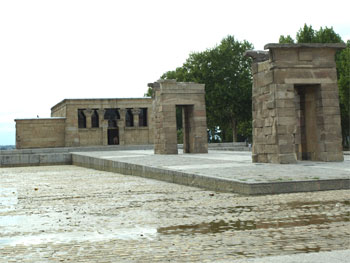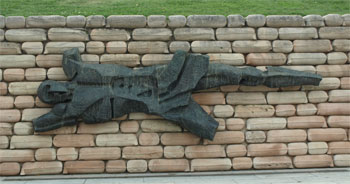Grand Circle Tour - 8/29 to 9/12/2011
After completing the Meditereanean cruises, we spent a night in Barcelona and then flew to Madrid to begin our tour of Spain and Portugal.
| Trip Map - Tour of Spain and Portugal | |
| August 29 | Barcelona to Madrid |
| August 30 | El Escorial and Madrid |
| August 31 | Madrid |
| September 1 | Toledo and La Mancha |
| September 2 | Cordoba |
| September 3 | The Alhambra (Granada) |
| September 4 | Tangier, Morocco |
| September 5 | Malaga and Torremolinos |
| September 6 | Rhonda |
| September 7 | Seville |
| September 8 | Brito Paes Horse Ranch, Algarve region of Portugal |
| September 9 | Lisbon, Portugal |
| September 10 | Sintra, Cascais, and Lisbon |
| September 11 | Lisbon |
| September 12 | Barcelona to Estes Park |
Tues., 8/30/11 - Madrid & El Escorial
This morning the eleven of our group who have arrived on time took the GC (Grand Circle) optional tour to El Escorial, which is in the town of San Lorenzo de El Escorial about 45 minutes from Madrid. It is a UNESCO World Heritage Site. The structure is called a monastery although it was also the historical residence of the King of Spain. The monastery was originally a property of the Hieronymite monks and was completed in 1584. It is considered an 8th wonder of the world. Philip II wanted a "palace for God." It took 21 years to build. It is now a historic site and the resting place of 500 years of Spanish kings.
We toured the inside - no pictures allowed - but it was beautiful.
El Escorial - the Royal Monastery |
Royal Monastery
|
Facade of the Six Kings of Judah (Israel)
|
The gardens around the huge building were all geometric designs of hedge bushes. |
On the way back to Madrid we stopped at the monument at the Valley of the Fallen. Franco had this built into the side of a stone mountain with great views across the valley. Casualties of the Spanish Civil War are buried there and Franco's tomb is in the front of the church.
Valley of the Fallen - Monument to those who fell in the Spanish Civil War |
Basilica of the Holy Cross at the Valley of the Fallen |
Around 5 pm we met Victor for a trip to the Prado National Museum. We walked to the park and stood in line to wait for the free admission opening at 6 PM. We wandered about looking at masterpieces by Goya (several of his black paintings were distressful to look at) and his famous 2nd of May and 3rd of May depictions of the Spanish Civil War. We also looked at masterpieces by Rubens, Rembrandt, van Dyke, Velazquez, El Greco, and many more. One would need lots more time to really do justice to the Prado.
Wed., 8/31/11 - Madrid
This morning Victor suggested a walking tour in old Madrid that we could do on our own. It was great. We walked west to the Palace. We stopped at Puerto del Sol (Gate of the Sun from which all mileage in Spain is measured) and took pictures.
Opera and ballet theater |
Isabel II |
We passed the opera and ballet theaters and the statue of Isabel II.
|
|
Phillip IV |
Romans and Visigoths
|
We walked through some gardens east of the palace (Plaza de Oriente) with a bronze statue of Phillip IV and marble statues of many of the Roman, Visigoth, and other early rulers of Spain. While waiting for the line to go through the Palacio Real (royale palace) to shorten, we walked through the Cathedral of Saint Mary the Royal of La Almudena, which is just opposite the palace.
|
|
Palacio Real
|
Cathedral of Saint Mary the Royal of La Almudena
|
Interior of the Cathedral of Saint Mary the Royal of La Almudena
|
Interior of the Cathedral of Saint Mary the Royal of La Almudena |
Interior of the Cathedral of Saint Mary the Royal of La Almudena
|
As you can see, the interior of the Cathedral was stunning - so colorful! The Palace tour was also very impressive, but no pictures were allowed. There are 2,800 rooms of which we saw only a few.
|
|
In the market |
We walked on to Plaza Mayor that was once a bullring. We ate lunch at Mageril's in the plaza and watched mimes, Disney characters, Spiderman, statues, and lots of people. It was pleasant weather and very entertaining.
|
|
Plaza Mayor |
Mageril's, our lunch spot in the Plaza Mayor
|
Plaza Mayor - Casa de la Panaderia |
We decided to continue walking back to the Prado to take pictures (outdoors) of what we saw yesterday without a camera because they are not allowed in the Prado. We took pictures of the Prado (building and statues), the Saint Jerome Church behind the Prado. |
The Prado Museum |
Statue of Velasquez
|
Statue of Goya |
Saint Jerome Church
|
We continued walking back toward the hotel, passing the Neptune Fountain and the Cibeles fountain in front of the old Post Office, which is now the "Communication Palace." This fountain used to be where soccer team victories were celebrated until damage was done to her. Now it has a police presence. We have many pictures of street scenes in Madrid. The ironwork on the balconies and the decorations (statues) on top of buildings are unique.
|
|
Neptune Fountain
|
Cibeles Fountain |
Communications Palace/City Hall |
Metropolis Building
|
Later in the afternoon, we joined the group and 15 additional travelers (who had finally arrived) for a briefing and sangrias and then took a bus tour of Madrid. Our first photo stop was at the Espana Square and monument to Cervantes who wrote Don Quixote. At the top is an orb (the world) and people from around the world reading his book. The front and back have statues of Don Quixote and Pancho Panza and Cervantes’ fabled true love, Dulcinea del Toboso.
|
Monument to Cervantes |
Temple Debod
|
Monument to the Spanish Civil War |
| Return to Top | Return to Itinerary | Return to Dreamcatcher Home Page |
